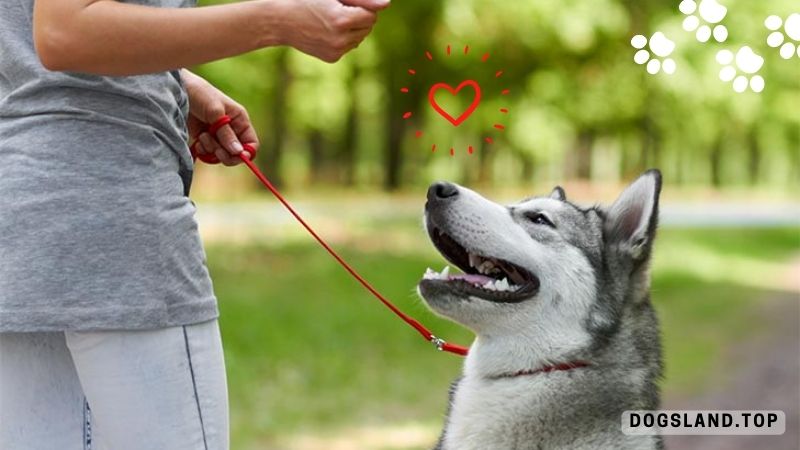What Works Best in Dog Training: Positive Reinforcement or Negative Reinforcement?

Although there are many approaches to training a dog, this article will only cover two: positive reinforcement and negative reinforcement. Having access to this information will help you understand why and how certain dog training techniques are recommended by professionals.
Before making any assumptions about a dog’s behaviour, it’s important to remember that dogs are not humans and that our expectations may not be met.
Put another way, dogs learn by doing; they try out different approaches, and then, depending on the results, they either keep doing it or stop.
Your dog is learning all the time from the outcomes of his actions and interactions with others and the world around him, whether or not you are aware of it.
Your dog, like a human, will avoid doing something when he knows doing it will have undesirable results or when he can remove the positive effects of doing it.
Never forget that your German Shepherd is one of the most intelligent canines, and that you and he will get along better if he learns to associate you with good things.
Think about it: the success of your canine companion depends entirely on you. You are in charge of every aspect of your dog’s happiness, from whether or not he gets to socialize with other dogs at the park, take a stroll around the block, or eat some delicious food.
As a result, if you give your dog these positive experiences, he will be more willing to do what you ask.
When a dog exhibits the behavior that is sought after, it is rewarded as part of the positive reinforcement training method.
Just about anything, from extended trips to the dog park and lots of loving pats to tasty treats and new toys, can serve as a form of positive reinforcement.
Positive reinforcement training
When it comes to training dogs, positive reinforcement is generally considered to be the most effective method because it teaches canines that they must earn the right to participate in pleasurable activities. In positive reinforcement training, the “dos” are emphasized rather than the “don’ts.”
What about punishment, also known as negative reinforcement, you might be wondering. The majority of dog trainers agree that punishing an animal for bad behavior never produces the desired outcome.
Harmful consequences of negative reinforcement: spanking your dog can make him sick. As we’ve discussed, this can strain your friendship with your dog and make training him more difficult than it needs to be.
Whenever you, the punisher, are around, your dog will display submissive and fearful tendencies.
And when you’re not there, your dog will revert to his or her old ways of acting. Think back to a moment when your parents told you “no,” and try to recall what you ended up doing.
A younger version of me certainly wouldn’t have surrendered so easily. Instead, I would have kept badgering my parents until they gave me what I wanted.
This is something I feel many of us can relate to, and hence understand why negative reinforcement training doesn’t actually work.
Whenever no one is home, I have seen dogs dig even more holes in the yard because their owners punished them.
Let’s be honest: dog owners may become so down on their dogs that they act on their primal instincts and resort to physical punishment.
Again, as was previously mentioned, you and your dog will benefit nothing from physical punishment. It’s better to remove yourself from the situation, collect your thoughts, and then come up with a constructive strategy for dealing with your dog’s behavior.
Let’s take a step back and consider when negative reinforcement training may be utilized in a nonabusive method to teach your dog before we determine that positive reinforcement training is the way to go.
The best way to put this is to consider anything you take pleasure in doing or experiencing; for instance, maybe you prefer the chance to indulge in your passion for seafood.
Now, this could seem great, but let’s say that whenever you eat an excessive amount of seafood at once, your stomach won’t feel that well afterwards.
However, there are occasions when you just can’t help but give in to the urge to gorge on seafood, even if doing so would inevitably lead to a case of diarrhoea.
Is it fair to say that this proves you’re “wrong”? Quite people, I suppose, would agree that the answer is most certainly not.
Now, apply this to a circumstance in which your dog might find himself. Even if your dog is well-trained, he may still occasionally want to dig holes in your garden out of pure enjoyment. This is not to say that your dog is awful, by the way.
When your dog exhibits a problem behavior repeatedly, one option is to use negative reinforcement to get him to change his ways and behave in a way that convinces you.
If your dog is in the habit of digging holes in your backyard, you might always call him in with a command like, “Rambo, come here.” This will help you maintain control of your dog’s behavior and teach him that certain behaviors are unacceptable.
Keep in mind that the goal here is not to scare your dog, but rather to show him how to earn more of the items he values by displaying positive behavior (positive reinforcement).
Your dog will learn to avoid engaging in unwanted behaviors in the future if you interrupt them in a way that isn’t abusive, and he or she won’t develop a fear of you as a result.
Positive reinforcement training is the best method overall, but there are times when dog owners need to supplement it with nonabusive forms of negative reinforcement.